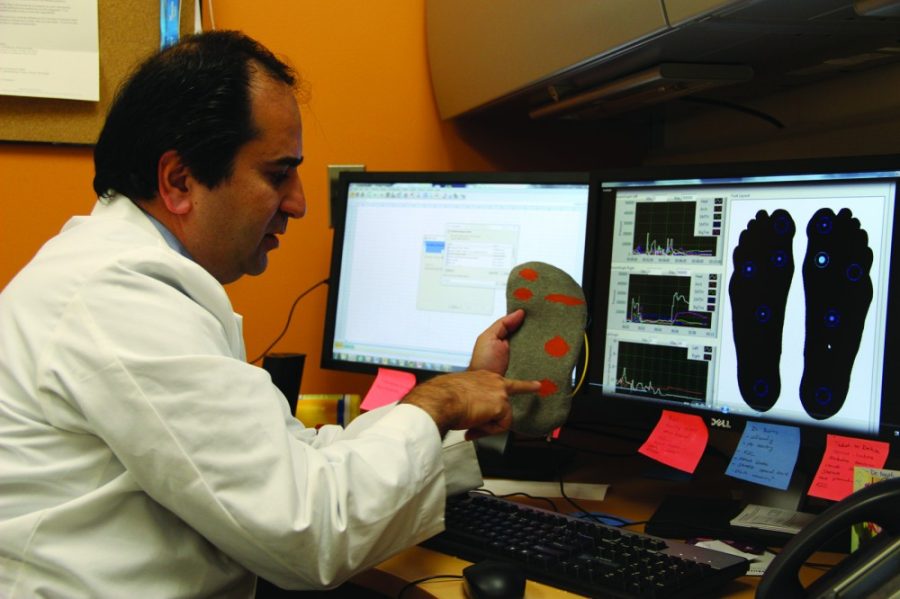Two UA researchers are teaming up to study the use of SmartSox, a cutting edge technology for the detection and prevention of diabetic foot ulcers that can lead to amputation.
More than $2 million in research grants was awarded to the UA Department of Surgery’s Southern Arizona Limb Salvage Alliance, and the Interdisciplinary Consortium on Advanced Motion Performance, as well as the Qatar-based Hamad Medical Corporation. The groups will collaborate in studying the effectiveness of socks that can help detect the development of ulcers.
Dr. David G. Armstrong, a UA professor of surgery and director of SALSA, and Bijan Najafi, a UA associate professor of surgery and director of iCAMP, are the principal investigators of the study, which is funded by the Qatar National Research Fund.
Twenty-six to 30 million people in the U.S. have diabetes, and the most common reason they go to the hospital is for the treatment of foot ulcers, according to Armstrong. One of the symptoms of diabetes is the loss of nerve function, especially in the lower extremities. With what Armstrong calls the “gift of pain” absent, patients may not feel the formation of ulcers, which is another effect of diabetes. Diabetic foot ulcers can become severely infected which can lead to amputaton.
“This is a worldwide epidemic,” Najafi said. “Every 20 seconds, a limb is lost to diabetes.”
SmartSox have fiber-optic strands embedded in the fabric that can detect changes in temperature, pressure, and joint-angle, all of which signal the development of ulcers.
Patients will put the socks on, walk around the exam room, and the data would be instantly available. Doctors could detect changes in the walking patterns, signifying a possible problem.
“This is a game-changer in measuring how people move through their world,” Armstrong said.
The technology, once refined, could be used at home as well. Armstrong said he envisions a future in which patients wearing the socks would be alerted if, for instance, one of their toes was hotter than the others, another sign of a developing ulcer. The hospital would also be notified and an appointment could be scheduled.
“It’s like OnStar for your body,” Armstrong said.
The researchers are in the process of recruiting 120 high-risk patients for their year-long study, though it has the potential to be extended. One phase of the study will assess the probability of foot ulcers, as well as the effects of surgery on the foot using the SmartSox. The other phase will compare traditional treatment to treatment using the information gained from the SmartSox.
Although the researchers are enthusiastic about the technological aspect of their project, their ultimate goal is saving limbs.
“The ability to be mobile and move easily is key to having the highest quality of life,” Najafi said. “We’re helping people. It’s the best thing.”









